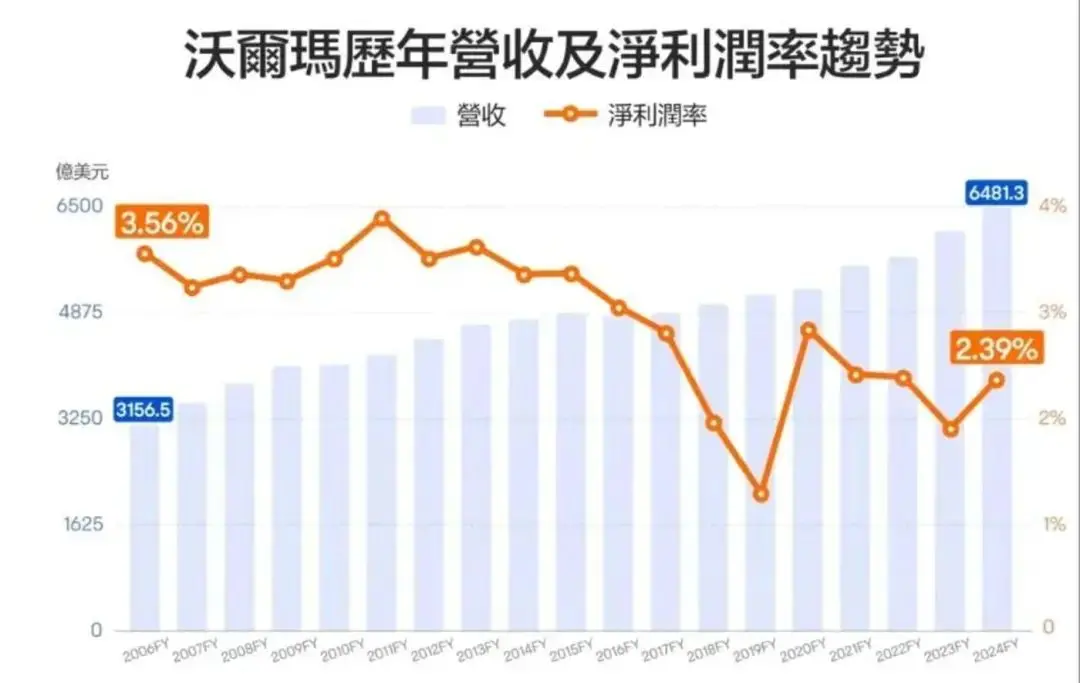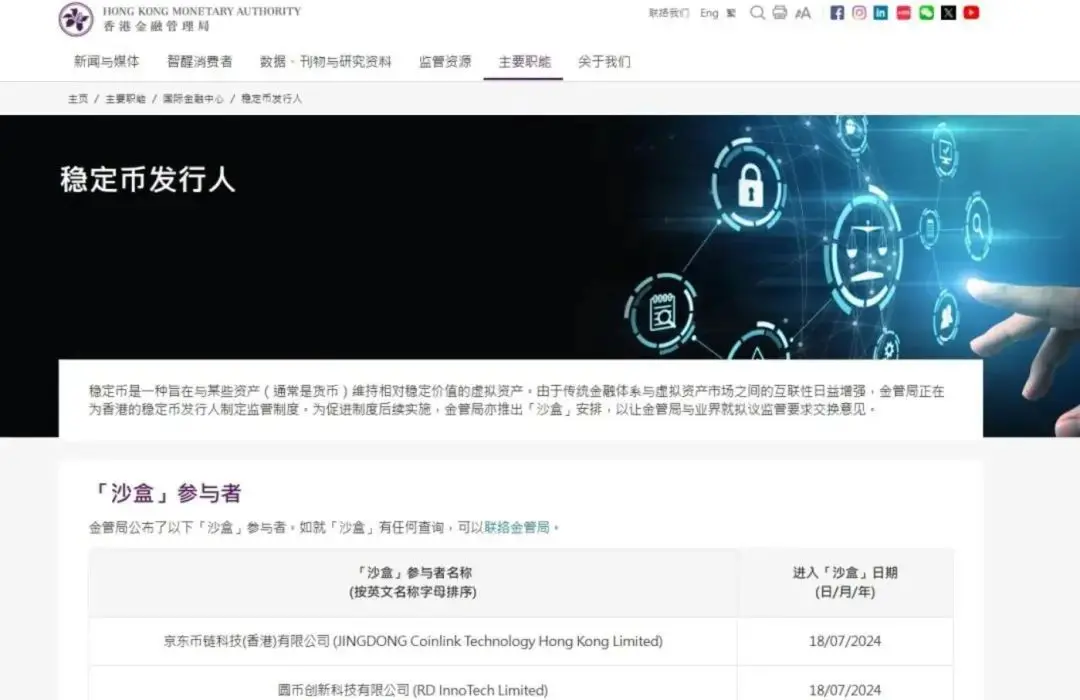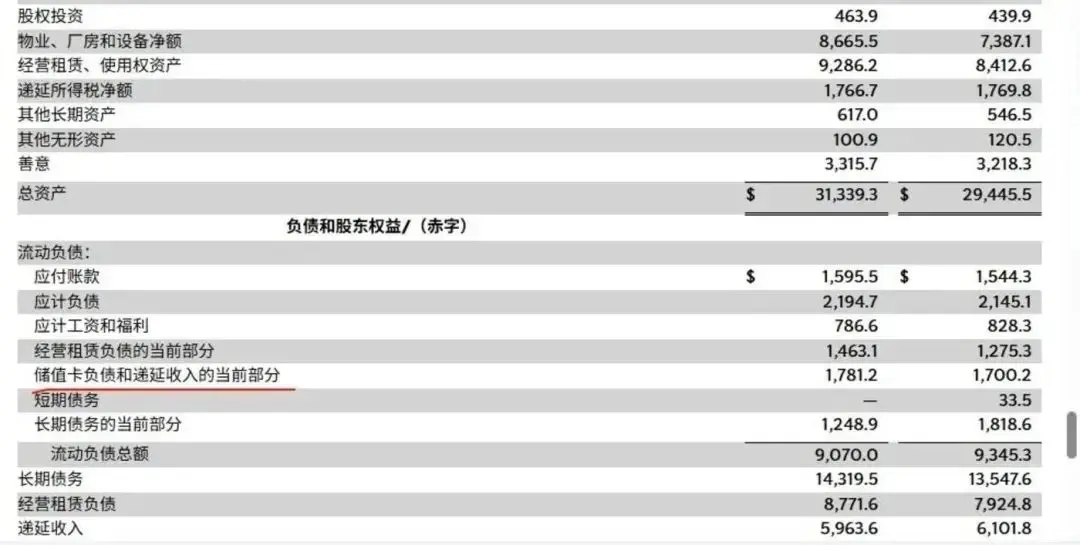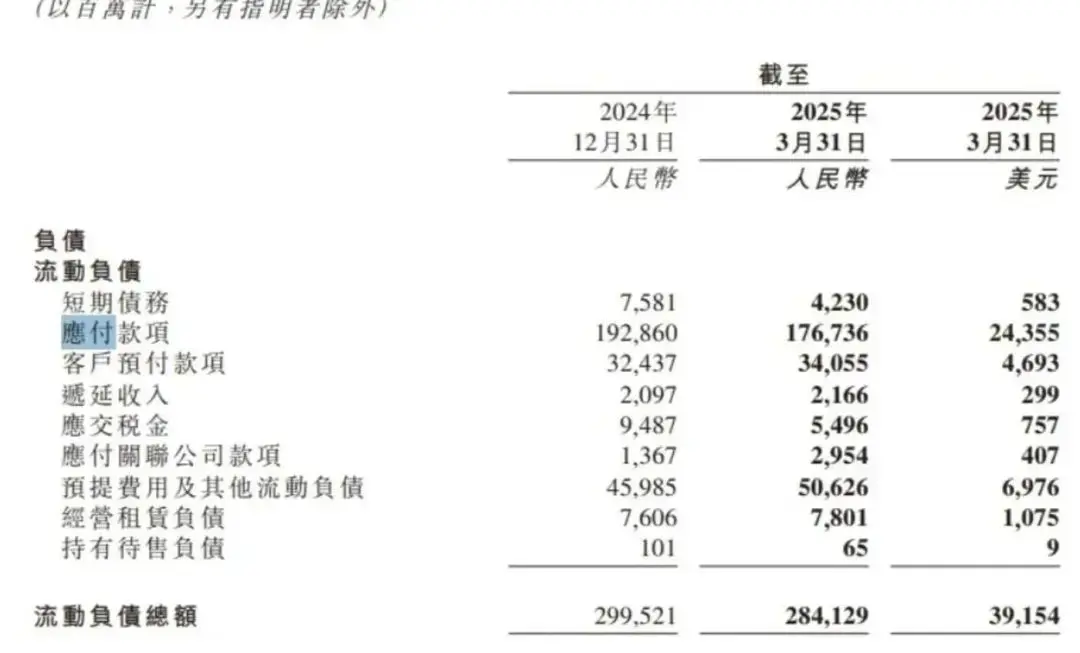Stablecoins, save bad business
Stablecoins, save bad business
Author: Titanium Media
A few days ago, Wang Puzhong, CEO of Meituan's core local business, revealed the profit margin of its takeaway: about 4%. This is exactly the "profit margin" of the US dollar stablecoin. Because the business model of stablecoins is to buy treasury bonds with the money users buy stablecoins to earn profits, and the current interest rate on US dollar treasury bonds is about 4%. – It doesn't seem like much, but this has already exceeded the net profit of many businesses. Walmart's net profit margin in fiscal 2024 is only 2.39%, JD.com's net profit margin in 2024 is 3.6%, and Amazon's retail business profit margin is about 5%. These companies are all large companies that are actively issuing stablecoins. If stablecoins can really become the mainstream payment method in their ecosystem, as the outside world imagines, interest income alone could reach tens of billions of yuan per year - not only a financial management method, but also a source of income that can become a pillar. Many low-profit businesses will permanently change their business models. The lower the profit, the more stablecoins are needed
4%, which is the "natural base" of the US dollar stablecoin world. The business model of the entire industry revolves around this number, which is the current US dollar Treasury bond interest rate. The fees for stablecoin users to purchase stablecoins are mostly used by issuers to purchase this risk-free investment product. If $100 million of stablecoins can be issued, then the issuer can earn about $4 million in revenue per year. This is the business model of stablecoin manufacturers such as Circle and Tether. On the one hand, 4% is too low. It is just a kind of interest, of course, a company can rely on interest to optimize its financial structure, how can it rely on bank interest to eat? And it is also volatile, once the Fed cuts interest rates sharply, the net profit of all stablecoin manufacturers will plummet. This kind of business has no profit pricing power of its own at all, and is a purely cyclical business. But on the other hand, 4% is high enough, higher than the net profit of many companies. Wang Puzhong, CEO of Meituan's core local business sector, accepted Meituan's takeaway profit margin of about 4% in the past year a few days ago. Internet giants have invested hundreds of billions of dollars in wars, fighting back and forth, and in the end they can only earn a dollar interest rate. The profit margins of Internet platforms are not as good as Pinduoduo, and Didi's profit margin in 2024 is lower than Meituan's food delivery business, less than 1%. Walmart's net profit margin in 2024 is only 2.3%, and Walmart's total profit is only about $15 billion, which is completely sorry for its perennial status as the No. 1 in the top 500. Online retailers are not much better, with JD.com's net profit margin in 2024 only 3.6%. On Amazon's side, the net profit margin for the whole year of 2024 will be less than 10% - this is still the result of high-profit cloud services being supported, and according to external estimates, its retail business is only about 5%. Not to mention the manufacturing industry, a large number of leading enterprises are in the red, not to mention 4%, and some companies do not even have a profit margin of 1%. The 4% interest may be just the icing on the cake for Apple, but for these companies, it is enough to support the core business of major profits. ——There is no precedent for finance as the main profit, and Li Auto fell into operating losses in the first half of 2024, with 1.439 billion yuan of net profit of 1.692 billion yuan being investment and wealth management income. At its peak, GE's manufacturing profits were low, but 40%-50% of its profits came from the financial business. It can be said that the lower the profit margin, the more the financial means of stablecoins are needed to optimize their business models. Of course, not every business has the ability to issue a large number of stablecoins. The role of a stablecoin is transaction, and it needs enough trading volume to support it – the most suitable business has surfaced: retail. They have almost the largest transaction volume in any industry and are extremely capable of issuing coins. At the same time, they have low profit margins, and the profits of entering this field will be more lucrative than high-profit companies. As a result, retail companies have become the most active group entering the stablecoin field. In June, the media revealed that both Walmart and Amazon were planning to launch stablecoins. In addition to these two retail giants, OTA platform Expedia is also gearing up. Across the ocean, Liu Qiangdong personally announced that JD.com hopes to apply for stablecoin licenses in all major currency countries around the world. Their ultimate goal is obvious: to issue a large amount of stablecoins and use them for trading their own goods. It is best to use your own stablecoin for all transactions within the ecosystem, just like barbershops pay through membership cards. They then save these "pre-recharge" fees to earn interest. How much revenue can stablecoins actually generate? Taking Walmart as an example, Walmart's revenue last year was as high as $680 billion, in addition to Walmart's part-party e-commerce business, with a total GMV of more than $700 billion. If a stablecoin with a GMV of one-tenth can be issued, its stablecoin market value may exceed that of Circle. If it can issue stablecoins with equal GMV, then Walmart will become a giant in the stablecoin industry. So can Walmart issue 700 billion stablecoins? Of course not. After all, money is liquid, and a GMV of 700 billion does not require 700 billion stablecoins. The number of stablecoins that Walmart can issue is actually "how much unconsumed balance can be deposited in the market". This number has a reference: Starbucks' unspent membership amount. Starbucks' 2024 financial report shows that the amount of stored value cards deposited on its account is as high as $1.7 billion. You know, Starbucks' annual net revenue is only $36 billion, and Walmart is about 20 times that. If Wal-Mart can rely on stablecoins to reach the Starbucks pre-recharge ratio, that is, nearly 5% of its revenue will be deposited in the pre-recharge of membership cards, and its account will be precipitated to nearly $40 billion. Caption: The $1.7 billion is the money that members recharge but have not yet spent. Starbucks can use it to buy Treasury bonds and earn about $70 million a year in profits In
addition, Starbucks is a high-frequency consumption, and whether it is Walmart's supermarket shopping or JD.com and Amazon's online shopping, its frequency is much lower than "drinking a cup of coffee", the lower the shopping frequency, the slower the flow of funds, and the more unspent money on the card - the more coins can be issued. The retail industry also spends a lot more than
Starbucks - Americans go to the supermarket for a few hundred dollars, and a cup of coffee is only $5. The high consumption amount means that the balance redundancy required on the account is also greater, and retailers can use the method of "recharge 1000 get 100 free" to attract consumers to recharge more - and send more coins. In terms of talent, Wal-Mart's ability to accumulate funds is stronger than Starbucks's. If its stablecoin payment ratio can reach Starbucks' loyalty card payment ratio, its currency issuance is likely to exceed $50 billion, and its annual interest income will exceed $2 billion. For Walmart, which has an annual profit of $15 billion, this is definitely not a small amount of money. This is not the end, retailers such as Walmart and Amazon also pay billions of dollars a year in fees from card networks such as VISA, MasterCard, and American Express. If the payment system can be greatly replaced by stablecoins, this will save a lot of profits. In addition, if all liquidity is deposited on its own chain, it can give birth to a large number of financial services. ——What is even more unrealistic is that as terminal retailers, Walmart, Amazon, and JD.com can even use stablecoins to pay for upstream goods and employee bonuses, which can directly refer to the accounts payable of enterprises. Walmart's accounts payable are more than $50 billion all year round, and the accounts payable in JD.com's latest financial report are as high as 176.736 billion yuan. If these accounts are paid through stablecoins, the upstream manufacturer receives the stablecoin, and the issuer can still earn interest for a period of time in the time difference between the stablecoin redemption. Caption: As the downstream of the industrial chain, retailers have accumulated a large amount of upstream funds As long as the above imagination can be partially realized, for these companies with extremely high revenues but extremely low profit margins, the revenue from stablecoins may even be higher than the main business. The business model of consumer companies may also change completely, and they can be like Costco: sell things without making money, make friends, and then earn profits through stablecoins (membership cards). Everyone is an insurance company
Of course, in the world of finance, it is useless to earn more, and you have to live to the end. In fact, before stablecoins, there were quite a few companies that wanted to rely on finance to improve their low profits. But in the end most of them failed. For example, manufacturing giant GE (General Electric). Compared with the meager profits of the manufacturing industry, financial money seems to be more and more profitable. This has become a powerful tool for GE to "improve bad business", and at its peak, more than half of its profits came from the financial industry. But the crisis is also obvious. Because the vast majority of enterprises do finance, there is actually only one source of funds: borrowing. For example, GE is one of the most capable bond issuers in history, and before the financial crisis, GE's commercial paper had exceeded $100 billion. These short-term loans are issued by GE to earn the interest difference between one in and one out - this was once the business model of many Internet finance companies in China. Today's people can find the problem at a glance: this essence is "loans to support loans" or "tear down the east wall to make up for the west wall". It cannot withstand any fluctuations, but as long as there is a little uncertainty in the entire chain, the company may not be able to pay back. As a result, GE collapsed directly during the financial crisis, and its stock price evaporated by 80%. It is the extremely high risk of finance that makes GE's gameplay almost disappear. Today's Internet finance companies such as Du Xiaoman also play a more platform role, and the funds come from banks and other partners. Instead of borrowing money to earn interest differences, after all, a fluctuation can break the entire chain. — But stablecoins don't have this problem. Compared with traditional finance, the financing model of stablecoins is comparable to playing hooliganism: companies need to pay high interest on bonds, even banks have to pay interest to depositors. But stablecoin issuers don't have to pay any interest. For example, Circle, the first stablecoin share, raised the redemption fee in October last year, up to 0.1%. Even if the financing does not pay interest, can you still collect a sum of money when you pay back the money? Even if there is a fee, stablecoins cannot be redeemed by anyone. For example, Tether stipulates that certain trusted entities that have undergone KYC verification can directly mint or redeem USDT. In short, only large institutions can redeem stablecoins. What's even more domineering is that TEDA also reserves its right not to redeem users, and really implements the phrase "it is the uncle who owes money". This greatly reduces the frequency of stablecoin redemptions, so that stablecoin manufacturers do not need too much reserves to meet liquidity needs. Due to extremely low financing costs and regulatory requirements, stablecoin manufacturers do not need to look for various high-return but high-risk loans like GE, but only need to buy risk-free wealth management products - treasury bonds. Currently, the four major U.S. dollar stablecoin issuers hold a total of about $180 billion in U.S. Treasury bonds. Of course, stablecoin companies can also invest in other products, such as Tether, the largest stablecoin issuer, which holds some gold and Bitcoin. If GE, Lehman Brothers, and Goldman Sachs had such financial instruments, then they would not have thundered in the 2008 financial crisis - Treasury bonds are a risk-free investment, and Treasury bonds will rise instead of falling during the financial crisis. Even if users redeem on a large scale and sell stablecoins, they can successfully repay debts. In a word: Stablecoins have low financing costs and low risk. In fact, the core of why banks and insurance companies can make money is to have a very low-cost and relatively low-risk source of funds. However, with the support of stablecoins, companies with large transaction volumes such as Walmart, JD.com, and Amazon are likely to become the players with the lowest financing costs in the future. They are not an insurance company, but they can enjoy negative cost leverage just like an insurance company. Of course, corporate coin issuance stablecoins are still being explored. Whether it will be issued on a large scale or only as a supplement to a few scenarios such as cross-border trade, each company has not yet given an answer. Even if it is issued on a large scale, can it become a versatile currency? If not, it is a "pre-recharge shopping card" for consumers. If consumers did not accept a few thousand dollars in advance at Walmart in the past, they may still not be able to accept it after having coins. Whether it is a revolution or a gimmick can only be verified by time. Related reading: "When Stablecoins Break the Circle: An In-depth Analysis of the Stablecoin Regulatory Policy Race in 12 Countries"The content on this page is provided by third parties. Unless otherwise stated, OKX is not the author of the cited article(s) and does not claim any copyright in the materials. The content is provided for informational purposes only and does not represent the views of OKX. It is not intended to be an endorsement of any kind and should not be considered investment advice or a solicitation to buy or sell digital assets. To the extent generative AI is utilized to provide summaries or other information, such AI generated content may be inaccurate or inconsistent. Please read the linked article for more details and information. OKX is not responsible for content hosted on third party sites. Digital asset holdings, including stablecoins and NFTs, involve a high degree of risk and can fluctuate greatly. You should carefully consider whether trading or holding digital assets is suitable for you in light of your financial condition.





